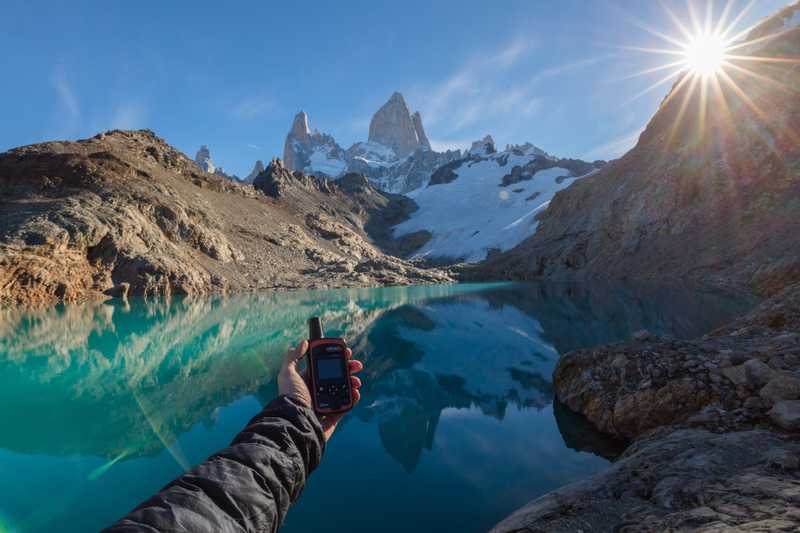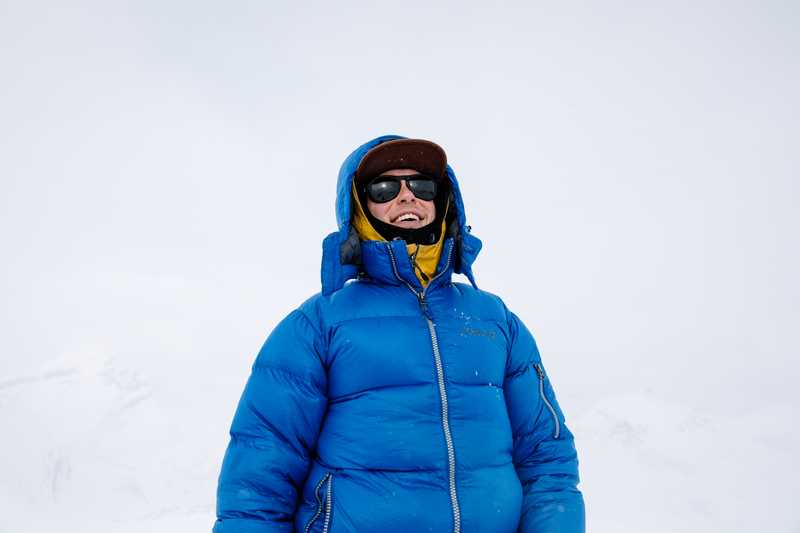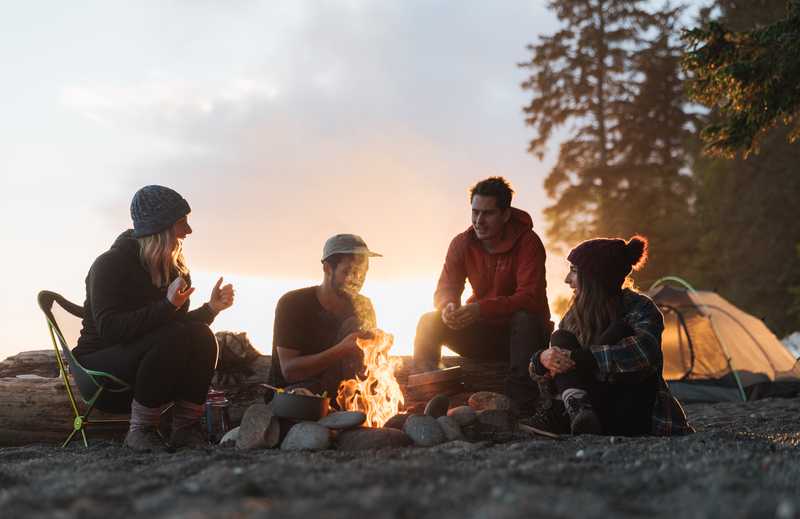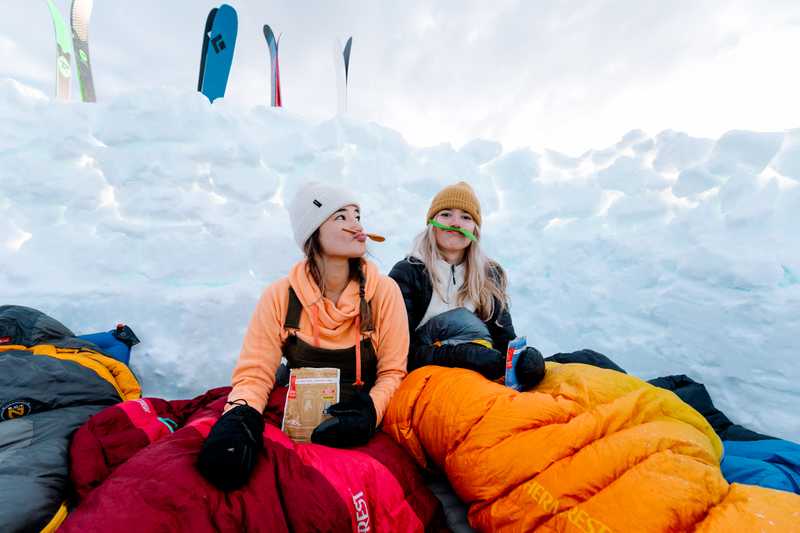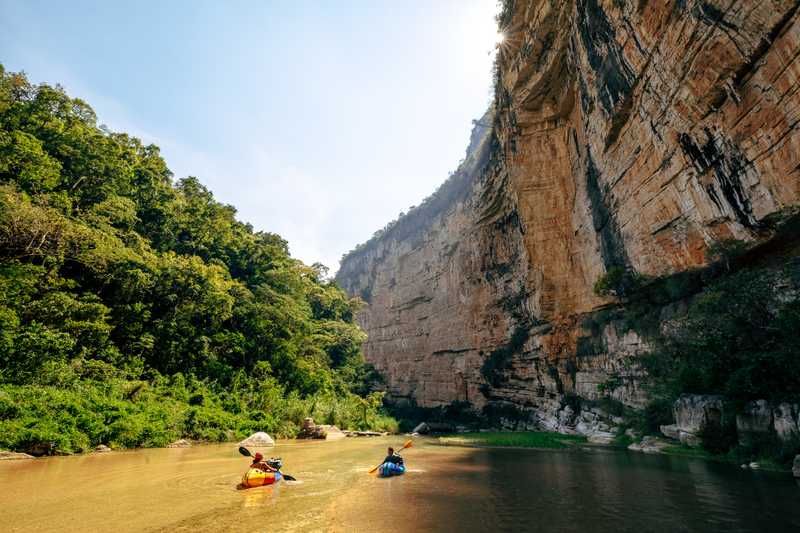The Ten Essentials is a systems-based approach to surviving accidents or emergencies in wild areas during your outdoor excursions that first appeared in print in the third edition of Mountaineering: The Freedom of the Hills (January 1974). The goal of the Ten Essentials and the items associated with each category is to address the following key questions:
1. Can you respond to an emergency or accident?
2. Can you safely spend a night or more outside in the event of a delay?
Following the guidance of the Ten Essentials can greatly improve the safety of you and your party. Each system satisfies a functional need and is broken into the categories below:
| 1. Navigation | 6. Fire |
| 2. Sun Protection | 7. Repair Kit, Knife, and Tools |
| 3. Extra Clothing | 8. Extra Food |
| 4. Illumination | 9. Hydration and Purification |
| 5. First-Aid Supplies | 10. Emergency Shelter |
1. Navigation
Key items: Map (w/case), compass.
Optional: Navigation apps, GPS/altimeter, route descriptions, other maps/photos.
Outdoor users must have the tools and skills to navigate their objectives and back, whether that be hiking, touring, climbing, paddling or any other adventure. It is critical to always carry a detailed topographic map of the area you’re visiting, in a waterproof case. In addition to the map, always carry a compass to navigate your direction.
Many individuals will choose to use modern digital mapping solutions such as Gaia Maps, or FATMAP, along with the digital compass on their smartphone. While these are fantastic tools that might be all that is required for certain front-country excursions, be sure to consider the battery life of your smartphone and what type of risk situation you could be in if your phone were to break or run out of battery. A traditional map and compass remain extremely important kit for any user to bring.
Other useful navigation tools include bringing a GPS device, altimeter (climbing), route descriptions, and other types of maps or photos. Some modern GPS devices such as the Garmin inReach Mini will also provide two-way distress signaling and weather forecasting to your location, improving your emergency preparedness significantly.
If you’re unfamiliar with how to use these navigation devices in practice, many outdoors clubs such as ACC (Alpine Club Canada) or AAC (American Alpine Club), or guiding companies offer courses on outdoor navigation that would be very productive if you’re beginning your journey in outdoor adventures.
2. Sun Protection
Key items: Sunglasses, sunscreen, SPF lip balm
Optional: Sun protection hat, long sleeved clothing
Protect yourself from the sun! Carry and wear sunglasses, sunscreen for the skin and lips, and clothing for sun protection when necessary.
A rule of thumb is to wear sunglasses anytime you would wear sunscreen, especially on snow, ice, water, and at high altitudes. Unprotected eyes can be easily burned before any discomfort is felt, resulting in a condition known as snow blindness. The frames of sunglasses can have shields on the sides which help to reduce light reaching the eyes. A group should carry at least one extra pair of sunglasses in case a pair is lost.
Use a sunscreen that blocks both ultraviolet A (UVA) and ultraviolet B (UVB) rays. UVA rays are the primary preventable cause of skin cancer; UVB rays primarily cause sunburn. The SPF factor should be a minimum of 15, which suggests that you should be able to stay in the sun for 15x longer than if you were not wearing sunscreen at all. Zinc based protection should also be used on the face in extreme solar environments such as high-altitude snowfields/glacier travel, or prolonged periods spent on water.
Don’t forget that in reflective environments, everything burns! Remember to protect your lips, your nostrils (especially if you enjoy picking your nose), and the underside of your chin!
3. Extra Clothing
Key items: Extra clothing as required for potential conditions
Optional: Dry bags or garbage bags to keep things dry
Ask yourself – what is needed to survive the worst conditions that could realistically be encountered on this trip? If you were not able to keep moving and had to remain still in an unplanned bivouac for a few hours or more, would you be able to stay warm without danger?
Long underwear, insulated hats, balaclavas offer more warmth for their weight than many other clothing items. An extra heavy pair of socks, and an extra pair of mitts can also be extremely helpful to deal with wet and cold extremities.
4. Illumination
Key items: Headlamp or flashlight, extra batteries
A headlamp or flashlight with extra batteries should ALWAYS be considered essential gear for an outing. LED based illumination has become the most popular option given their light weight, battery efficiency, and durability. A headlamp is typically preferable to a flashlight, given the hands-free nature of the device, allowing you to continue using your hands for the activity at hand, and giving you more mobility at camp.
Modern headlamps are waterproof, and some new models will have the hybrid option of using AAA batteries or a rechargeable cell that can be recharged between excursions. The Petzl Actik Core is a good example of a well rated headlamp with this hybrid option. It is imperative with a rechargeable headlamp to have a maximum charge before your outing, and some form of reserve option in the form of additional AAA batteries in the event that you use up the primary battery.
Aim to have a headlamp that has a variety of lighting options – several brightness/efficiency levels, beam patterns for wide angle and narrow, and even red bulb lighting which allows you to preserve your night-vision and keep from blinding your friends in a group setting.
5. First-Aid Supplies
Key items: Personal first aid kit at a minimum, with additional considerations for group size, trip length and type.
Carry and know how to use a first-aid kit, but do not let it give you a false sense of security. Always take steps to avoid injury or sickness (altitude, waterborne) in the first place.
The first-aid kit should be compact and waterproof, and suitable for outdoor excursions – conventional home first-aid kids are not suitable for backcountry use. At a minimum, a kit should include various gauze options, bandages, adhesive tape, scissors, cleansers or soap, latex gloves, and other appropriate medicines for your trip to treat ailments such as pain, bacterial infection, altitude sickness, and allergic reactions. We tend to keep our blister treatments such as moleskin in our first-aid kits too.
Adventure First-Aid kits can provide a great foundation to your kit, with you supplementing other trip-specific necessities. Accessories such as a SAM splint can create splints in the event of a broken bone when tree-branches are not available such as in a glacier or mountainous environment.
Lastly, a kit is only as useful as your own knowledge. Understanding how to implement first aid in a wilderness setting is largely different than in an urban setting as help may be hours, or days away. Getting wilderness first aid training from a local outdoors club or guiding outfit is a great investment in the safety of yourself and your trip partners.
6. Fire
Key items: Lighter/matches, firestarter (candle, chemical heat tabs, various kindling)
Optional: Stove and fuel for high-altitude snowy areas above treeline
Ensure that you have the ability to start a fire for warmth or cooking in the event of an emergency. Most individuals carry a lighter or two (mini-BIC butane), which you need to keep from getting wet. A second lighter can ensure that if the first one is empty of butane, you’ll have a second option. Some users will keep a flint and striker for fire-starting, which will produce sparks reliably at 5,500 degrees F, regardless of unfavorable conditions.
Firestarters to be used with wet wood are indispensable. Common options include bringing a tea-candle, chemical heat tabs, toilet paper or some other super flammable materials like lint from your home dryer.
In the event you are going to be spending the majority of the trip above treeline or in treeless environments, packing a stove and fuel can be a smart option to provide you with some warmth and the ability to melt snow for water and cook food.
7. Repair Kit, Knife, and Tools
Key items: Multi-tool with knife, activity specific repair items.
Knives are extremely useful in their applications in outdoor activities. Other tools can be part of a knife/multi-tool as part of your kit, which can include pliers, screwdrivers, or other devices. One of our favorites for weight and utility is the Leatherman Skeletool, which has additional driver bits you can purchase to increase the utility of the tool for repairs specific to your gear items.
Other repair parts you can include in your kit are shoelaces, safety pins, needle and thread, copper wire (heavy duty lacing for broken ski boots, canoes), duct tape, fabric repair tape, zip ties, plastic buckles, cordage, and replacement parts for equipment such as tent poles (pop can tin), stove parts, crampons, skis, or snowshoes.
Cycling sports will come with their own unique set of repair parts such as tubes, quick links, bolts, and tools.
8. Extra Food
Key items: A reasonable supply of extra food based on trip length – one-days worth is typical.
Extra food for excursions should require no cooking, be easily digestible, and store well for extended periods of time. Options such as nuts, granola, dried fruit, bars, dried meats, and quick oats work well, with additional options such as soup useful if there is a stove present.
Typically an extra day’s worth of food will suffice for shorter trips in the event of a delay, emergency, or other type of setback. Extra food rations should be considered for longer multi-day trips based on the level of risk or likelihood of delays.
9. Hydration and Purification
Key items: Water bottle or reservoir, water treatment solutions
Always carry at least one water bottle or water reservoir, filled from a reliable (clean) source before beginning your trip. Ask yourself the question: If I run out of water and I am more than a few hours away from a clean source, will I be ok?
If you are venturing beyond the reasonable distance of a clean water source, where running out could be a material danger, be sure to bring options to either treat the water sources you come across, or melt snow if you are in a wintery environment. Water treatment options include filtration devices, purification chemicals, UV-light purifiers, or boiling the water for 2 minutes.
As tempting as it can be to drink straight from found water sources while on your excursions, these sources can harbour a lot of concerning micro-organisms including:
- Protozoa - Includes cryptosporidium and giardia (the cause of giardiasis or “beaver fever”). Protozoa are increasingly widespread in North America.
- Bacteria - Most are harmless, but some cause illnesses such as diarrhea and dysentery. They are smaller than protozoa.
- Viruses – Can cause hepatitis, polio and other diseases. They can be present in any water contaminated by human waste, and are extremely tiny – smaller than bacteria or protozoa.
Most filters can remove the protozoa and bacteria above, but if you are planning on travelling to countries where viruses are a risk in the water, you will want to use chemical treatment to destroy the viruses.
10. Emergency Shelter
Key items: Additional protection from rain and wind such as a jumbo garbage bag, emergency blanket, tarp, or bivy.
If your group isn’t carrying a tent or shelter for your excursion, carry some form of emergency shelter that will provide you and others with protection from rain and wind (in addition to your rain clothing).
The simplest emergency shelters include jumbo garbage bags, plastic tube tents or reflective emergency blankets. Bivy sacks provide more protection from the elements by cocooning the user completely from the wind and rain. Tarps with guy-lines can make a great emergency shelter in forested areas where it can be pitched to shelter multiple party members from a stormy situation.
Pack with packup
Prepare for your outdoor adventures in a thoughtful and considered way to minimize the risks to your party. Our digital platform ensures that you'll never forget to pack your Ten Essentials on your adventures.
While we are not sponsored by any of these brands, some of these items have affiliate links and we will make a small percentage off the value of a sale. Rest assured, we use all of these items, and believe in their value. Think of these links as a way of giving back for using this detailed instructional guide!
